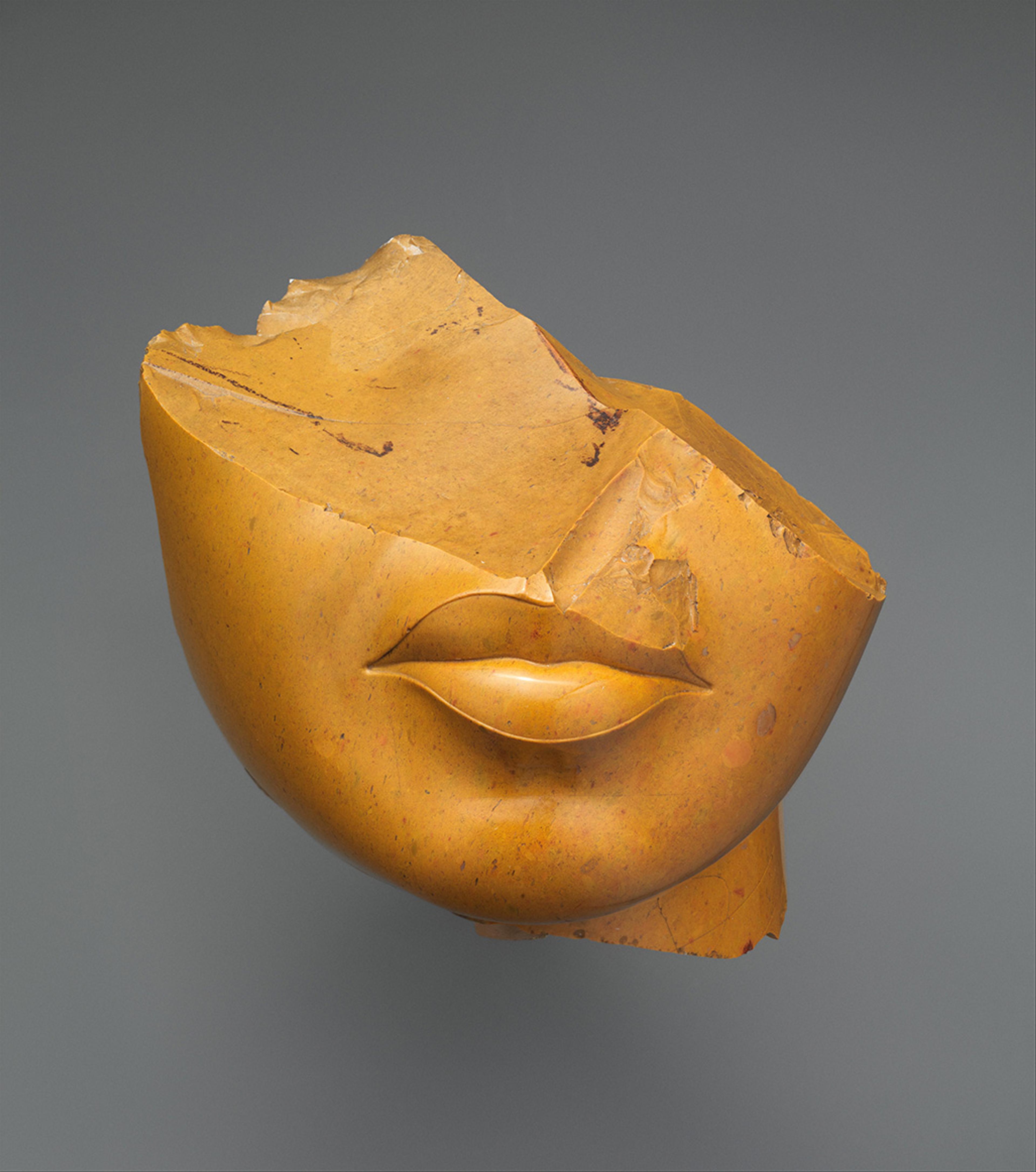
Fragment of a Queen's Face, ca. 1390–1336 B.C. Egypt, probably Middle Egypt, Amarna (Akhetaten). Yellow jasper, 5 1/8 x 5 x 5 in. (13 x 12.5 x 12.5 cm). The Metropolitan Museum of Art, New York, Purchase, Edward S. Harkness Gift, 1926 (26.7.1396)
It's balanced between this incredible idealization and humanity.
My name is Barry X Ball. I'm a sculptor.
This Amarna-period Egyptian fragment... It's balanced between this incredible idealization and humanity. The parts that were not there—the loss—you know, (you feel guilty saying this) give it even more power. And it's not the eyes, what we would think would be the more important thing. It's a mouth. This beautiful ridge line around the lips would seem to be something that would make it seem kind of otherworldly and not human somehow works to make those lips look fleshy.
She's obviously a gorgeous woman, but there's little puckers that are coming through the stylization. A couple wrinkles in the neck which are just beautifully incised. There's this real sense of integrity I get from the making of this, that there is no unimportant part. Even though we've only got a fragment you have this feeling that whole thing must have been like a jewel.
This is yellow jasper which is harder than steel. They were obviously using another stone to carve it—that's all they would have had. Every advantage that the twenty-first century brings me... I would have a hard time equaling this, just in pure technical achievement.
This was a royal personage, this wasn't an anybody. Egypt had this brief period when they flipped from polytheism to monotheism and then they flipped back again. Amarna people and their followers destroyed each other's works. When politics and religion, etc., change, why does it always have to be ushered in with the destruction of what we artists do?
You know, I pour my life into the making of my pieces. It's emotionally hard for me to take. The minute I'm hit with the object like this I feel like I understand what they were going for in Egypt; it doesn't seem all that distant to me. And there's something to admire.
It's human like us.